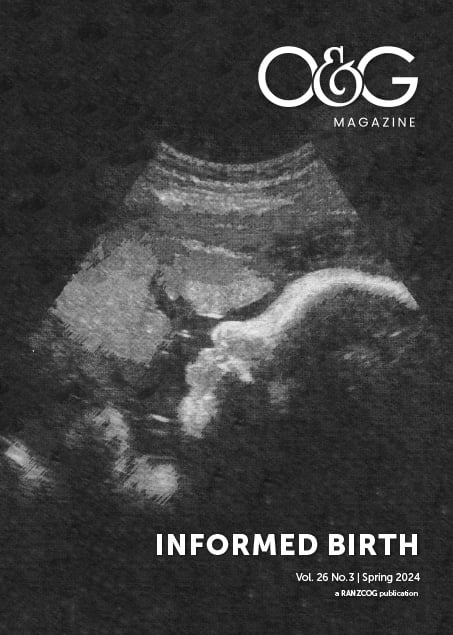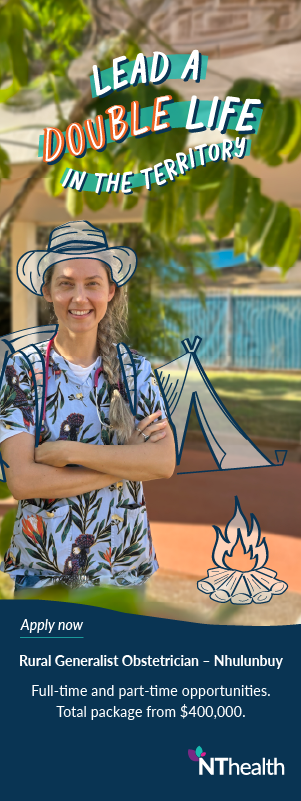Childbirth and Parenting Educators of Australia (CAPEA) is a voluntary, professional association that supports Childbirth and Parenting Educators. Each year, CAPEA members work with their health colleagues to prepare parents for childbirth and parenting.
In the 1930s and 1940s, interest in natural childbirth grew through the popular work of Obstetricians Grantly Dick-Read and Ferdinand Lamaze, which were based on Pavlov’s theory of the ‘conditioned response’2. It was around this time that physiotherapists began to provide prenatal “training for childbirth”3.
Growing in popularity in the 1950s, antenatal education was formalised and held in a group setting taught by health professionals. The focus was the perceived needs of the woman to prepare for physiological labour and a hospital birth. In 1965, the Bradley method “Husband-Coached Childbirth” encouraged male partners to provide support for their partner during the labour4 and fathers were encouraged to be present for their child’s hospital birth.
Modern Western parent education promotes the support person to be an active participant/parent, as younger generations are expecting equity within the home and in parental roles5. Antenatal education is now available for tailored groups, for instance dads only, CALD and LGBTIQ+ communities.
The COVID-19 pandemic provided an opportunity to diversify the formats, resources, skills and technology used in providing education online. These are examples of how antenatal educators adapt content, format and resources to provide psychological safety in a group setting to foster a positive adult learning environment.
Antenatal education has become a normalised part of “having a baby in Australia”. It is promoted as increasing parental confidence, self-efficacy, parenting skills and knowledge. Parents are asking for more focus on preparation for parenthood, in a format that works for them6. The newest parents, the digital natives, gather information differently to previous generations and may rely on popular opinion that is presented as fact7.
Criticisms of antenatal education have included:
- A lack of evidence about its efficacy in birth outcomes
- Lack of consideration of adult learning principles8
- An increasing focus on hospital policy/intervention in labour and birth rather than the participants needs9
- Commercialisation of antenatal education
- Concerns about the quality and lack of standardisation of content, and a lack of rigorous oversight.
- In Australia, there are no standards or qualifications required for antenatal educators or antenatal education programs10.
Recent studies show that antenatal education can change birth outcomes. Women whose antenatal education included psychoprophylaxis had higher rates of vaginal birth rates11.
In 2024, antenatal education is primary health care. Knowledge and discussion around preconception care for both men and women are gaining momentum, as we learn more about epigenetics. An infant’s growth, development, and mental health benefit when we support all families, but when we provide additional targeted support to priority populations, children thrive12.
We know that the intrauterine and extrauterine environment can shape a baby’s growing brain and life-long health. Antenatal education is changing how we talk about infant growth and development13. We reframe how we talk about parenting, focusing on children and supporting parents because we know this is the language that can shift mindsets14.
As antenatal educators we are health literacy translators. Health literacy is how people access, understand and use health information in ways that benefit their health. It can be affected by an individual’s age, education, disability, culture, and language. It affects a family’s capacity to make informed decisions15. Informed decision-making skills are a prerequisite to giving informed consent.
For there to be valid informed consent, the person consenting must:
- Have the legal capacity to consent
- Give their consent voluntarily
- Give their consent to the specific treatment, procedure or other intervention being discussed
- Have enough information about their condition, treatment options, the benefits and risks relevant to them, and alternative options for them to make an informed decision to consent. This includes the opportunity to ask questions and discuss concerns16.
Examples of this are the Third- and Fourth-Degree Perineal Tears Clinical Care Standard | Australian Commission on Safety and Quality in Health Care17 and Stillbirth Clinical Care Standard (2022) | Australian Commission on Safety and Quality in Health Care18. Both standards are about challenging topics. Historically, both topics might not have been included in an antenatal education program for fear of upsetting the birthing families. Both standards identify that information should be provided and discussed antenatally.
This allows women and their families time to consider both the risks and benefits involved, and the evidence-based care and skills that can be provided to reduce her risk; for example, perineal massage and warm compresses during second stage to decrease the risk of 3rd and 4th degree tears, smoking cessation and being aware of her baby’s normal fetal movements to reduce the risk of stillbirth. This process facilitates individualised informed decision making so that the woman can decide whether to provide informed consent (or not) for the care she is offered.
Epidural analgesia, induction, instrumental and Caesarean birth rates are increasing. These medical procedures require informed consent. How do we work together with our medical colleagues to help our families become informed, so that when consent is given, it is truly informed consent? The answer is partnership, with our consumers and our colleagues19.
The recent NSW Senate inquiry into Birth Trauma recommends: “NSW Government develop minimum standards for and ensure access to comprehensive evidence-based antenatal education for birthing and non-birthing parents covering all aspects of birth, including different models of maternity care, potential interventions, and their rights during the birthing process. This education should be made available in a variety of modalities and in a form that is accessible to culturally and linguistically diverse communities”20.
For more information on CAPEA visit: capea.org.au
Bithia O’Brien is the Clinical Midwife Consultant for Parent Education in Sydney Local Health District. For the past 20 years she has worked with women and families as a midwife and more recently as a Child and Family Health Nurse. Her vision is to expand antenatal education to include preconception care, infant mental health and parenting skills, accessible for all families.
References
- O’Connor G. International Journal of Birth and Parent Education – International Journal of Birth and Parent Education [Internet]. Ijbpe.com. 2016. Available from: ijbpe.com
- Homepage – CAPEA [Internet]. CAPEA. 2024 [cited 2024 July 7]. Available from: capea.org.au
- Morrisey M. A SURVEY OF ANTENATAL EDUCATION IN AUSTRALIA. Received June 1973. Australian Journal of Physiotherapy. 1973 Sep;19(3):100–4.
- Fernández Fernández-Arroyo M. Childbirth Education: Comparative Analysis [Internet]. Childbirth. IntechOpen; 2020. Available from: dx.doi.org/10.5772/intechopen.88021
- aifs.gov.au/research_programs/evidence-and-evaluation-support/cfc-program-profiles/baby-makes-3.
- Ahldén I, Ahlehagen S, Dahlgren LO, Josefsson A. Parents’ Expectations About Participating in Antenatal Parenthood Education Classes. The Journal of Perinatal Education [Internet]. 2012;21(1):11–7. Available from: ncbi.nlm.nih.gov/pmc/articles/PMC3404534
- Gleeson DM, Craswell A, Jones CM. Women’s use of social networking sites related to childbearing: An integrative review. Women and Birth. 2019 Aug;32(4):294–302.
- Knowles MS, Holton III EF, Swanson RA, Robinson PA. The Adult Learner. Routledge; 2020.
- Svensson J, Barclay L, Cooke M. The Concerns and Interests of Expectant and New Parents: Assessing Learning Needs. Journal of Perinatal Education. 2006;15(4):18–27.
- Downer T, Young J, McMurray A. Are we still woman-centred? Changing ideologies, a history of antenatal education in Australia. Collegian [Internet]. 2020 Dec;27(6):634–41. Available from: collegianjournal.com/action/showPdf?pii=S1322-7696%2820%2930112-8
- Shand AW, Lewis‐Jones B, Nielsen T, Svensson J, Lainchbury A, Henry A, et al. Birth outcomes by type of attendance at antenatal education: An observational study. Australian and New Zealand Journal of Obstetrics and Gynaecology. 2022 May 17;62(6).
- Brighter Beginnings: The First 2000 Days of Life [Internet]. 2021. Available from: health.nsw.gov.au/kidsfamilies/programs/Factsheets/brighter-beginnings.pdf
- Miranda A, Sousa N. Maternal hormonal milieu influence on fetal brain development. Brain and Behavior [Internet]. 2018 Jan 24;8(2):e00920. Available from: ncbi.nlm.nih.gov/pmc/articles/PMC5822586/
- L’hote E, Kendall-Taylor N, O’neil M, Busso D, Nichols J. Talking about the Science of Parenting A Frame Works Message Memo [Internet]. 2018. Available from: parentingrc.org.au/wp-content/uploads/Talking-about-the-Science-of-Parenting.pdf
- Australian Commission on Safety and Quality in Health Care. Health literacy [Internet]. safetyandquality.gov.au. 2019. Available from: safetyandquality.gov.au/standards/nsqhs-standards/partnering-consumers-standard/health-literacy
- Australian Commission on Safety and Quality in Health Care. Informed Consent in Health Care [Internet]. 2020. Available from: safetyandquality.gov.au/sites/default/files/2020-09/sq20-030_-_fact_sheet_-_informed_consent_-_nsqhs-8.9a.pdf
- Third- and Fourth-Degree Perineal Tears Clinical Care Standard | Australian Commission on Safety and Quality in Health Care [Internet]. www.safetyandquality.gov.au. Available from: safetyandquality.gov.au/standards/clinical-care-standards/third-and-fourth-degree-perineal-tears-clinical-care-standard
- Australian Commission on Safety and Quality in Health Care. Stillbirth Clinical Care Standard [Internet]. 2022 Nov. Available from: safetyandquality.gov.au/sites/default/files/2022-10/stillbirth_clinical_care_standard_2022.pdf
- Australian Commission on Safety and Quality in Health Care. Partnering with patients in their own care | Australian Commission on Safety and Quality in Health Care [Internet]. Safetyandquality.gov.au. Australian Commission on Safety and Quality in Health Care; 2019. Available from: safetyandquality.gov.au/standards/nsqhs-standards/partnering-consumers-standard/partnering-patients-their-own-care
- Select Committee on birth trauma [Internet]. Available from: parliament.nsw.gov.au/lcdocs/inquiries/2965/FINAL%20Birth%20Trauma%20Report%20-%2029%20April%202024.pdf
- National Competency Standards for Childbirth and Early Parenting Educators Second Edition Childbirth and Parenting Educators of Australia Available from: capea.org.au/wp-content/uploads/2021/01/National-Competency-Standards-2019-inpageversion.pdf
- Antenatal education – Putting research into practice: A guideline review – ScienceDirect






Leave a Reply